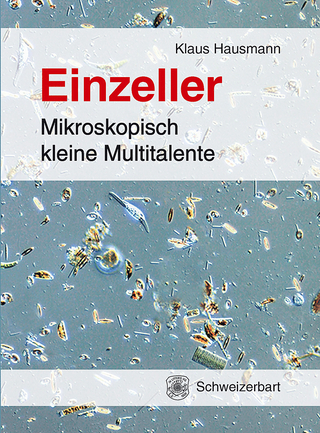
Carbohydrate Recognition in Cellular Function
John Wiley & Sons Ltd (Verlag)
978-0-471-92307-7 (ISBN)
- Titel ist leider vergriffen;
keine Neuauflage - Artikel merken
Carbohydrate Recognition in Cellular Function Chairman: E. Ruoslahti 1989 Cells interact with their environment and with neighbouring cells by an intricate array of molecular recognition events. This book explores the role of carbohydrates in communication between cells of multicellular organisms. The thermodynamics and spatial restrictions of oligosaccharide - protein interactions are discussed. An analysis of the amino acid sequences required for carbohydrate recognition and the use of a consensus sequence to identify potential carbohydrate-binding proteins are described. Carbohydrates are important components of the different families of Cell adhesion molecules; one example is the mammalian sperm receptor, where the species specificity of egg recognition is achieved by a particular class of oligosaccharides.
Isolated gangliosides and galactosides also mediate recognition processes directly, in nerve cells at least; a specific ganglioside activates a membrane-bound protein kinase in neuroblastoma cells, triggering phosphorylation of several cell surface proteins; and the different subsets of rat dorsal root ganglion neurons express distinct sets of oligosaccharides which are recognized by binding proteins on dorsal root ganglion and spinal neurons. Modification of the carbohydrate moiety of glycoproteins is a frequent occurrence in certain diseases, including those of the immune system. Recent progress in understanding all these areas is described. The discussions after each presentation highlight work that remains to be done. Related Ciba Foundation Symposia: No 143 The biology of hyaluronan Chairman: T. C. Laurent 1989 ISBN 0 471 92305 2 No 136 Cell and molecular biology of vertebrate hard tissues Chairman: G. A. Rodan 1988 ISBN 0 471 91885 7 No 124 Functions of the proteoglycans Chairman: V. C. Hascall 1986 ISBN 0 471 91090 2
Oligosaccharide protein interactions - a three-dimensional view, J.P.Carver et al; multifunctional glycoprotein receptors for insulin and the insulin-like growth factors, M.P.Czech et al; multiple subfamilies of carbohydrate recognition domains in animal lectins, K.Drickamer; glycoprotein oligosaccharides as recognition structures, T.Feizi; binding modes of mammalian hepatic Gal/galNAc receptors, Y.C.Lee. Part 1 Two human lysosomal membrane glycoproteins: nucleoplasmic and cytoplasmic glycoproteins, G.W.Hart et al; bioactive ganglioside-mediated carbohydrate recognition in coupling with ecto-protein phosphorylation, Y.Nagai and S.Tsuji; role of carbohydrates in receptor-mediated fertilization in mammals, P.M.Wassarman; families of neural adhesion molecules, M.Schachner; structural and biological properties of the carbohydrate units of nervous tissue glycoproteins, J.Finne; carbohydrate recognition in neuronal development - structure and expression of surface oligosaccharides and beta-galactoside-binding lectins, M.A.Hynes et al. Part 2 Expression of developmentally regulated carbohydrates: function and pathology of the sugar chains of human immunoglobulin G, A.Kobata et al.; the role of oligosaccharides in modifying protein function, R.W.Rademacher and R.A.Dwek; leukosialin, a major sialoglycoprotein defining leucocyte differentiation, M.Fukuda; Part 3: the diversity of N-linked oligosaccharides on human immunodeficiency virus.
| Erscheint lt. Verlag | 26.7.1989 |
|---|---|
| Reihe/Serie | Ciba Foundation Symposium ; 145 |
| Zusatzinfo | 69 illustrations, 26 tables |
| Verlagsort | Chichester |
| Sprache | englisch |
| Maße | 137 x 256 mm |
| Gewicht | 610 g |
| Themenwelt | Naturwissenschaften ► Biologie ► Zellbiologie |
| ISBN-10 | 0-471-92307-9 / 0471923079 |
| ISBN-13 | 978-0-471-92307-7 / 9780471923077 |
| Zustand | Neuware |
| Haben Sie eine Frage zum Produkt? |
aus dem Bereich


